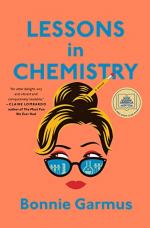
|
| Name: _________________________ | Period: ___________________ |
This test consists of 5 short answer questions, 10 short essay questions, and 1 (of 3) essay topics.
Short Answer Questions
1. How do the sponsorships Walter negotiates affect KCTV's bottom line?
2. What is the room number of the storage room where Calvin's files are stored at Hastings?
3. What is the name of Dr. Mason's wife?
4. At what temperature does Elizabeth say to bake her dish in Chapter 29?
5. What apron does Elizabeth wear in Chapter 33?
Short Essay Questions
1. In Chapter 33, what questions does Francine Luftson have for Elizabeth, and what advice does Elizabeth give?
2. What are Wakely's thoughts about lying in Chatper 28?
3. In Chapter 29, what encouragement does Elizabeth give Mrs. Fillis?
4. What type of relationship does Harriet notice between Elizabeth and Mad?
5. What complaints does Mrs. Mumford have about Madeline in Chatper 23?
6. What does Elizabeth encourage Mad to do as soon as she can walk, and how does Mad take advantage of her mother's permission?
7. What does Harriet think when Madeline brings home a family tree project?
8. How does Frask help Elizabeth and why?
9. Why is it so important for Elizabeth to get Mad into school?
10. What is Phil Lebensmal's, KCTV's executive producer, vision for Supper at Six compared to Elizabeth's vision?
Essay Topics
Write an essay for ONE of the following topics:
Essay Topic 1
Phil Lebensmal is the executive producer at the television station. Why is he despised and why are so many people happy when he has a heart attack?
Essay Topic 2
Artistic license is the way that an author creates, art, music, or writing based on her interpretation of life. How does Garmus use artistic license to create the realistic background of Lessons in Chemistry?
Essay Topic 3
An analogy is the comparison of an unfamiliar object or idea to a familiar one in an attempt to explain the unfamiliar or to help readers understand characters, events, or concepts. What are some analogies Garmus uses in Lessons in Chemistry? How do these analogies help readers comprehend characters, events or concepts?
|
This section contains 943 words (approx. 4 pages at 300 words per page) |

|




